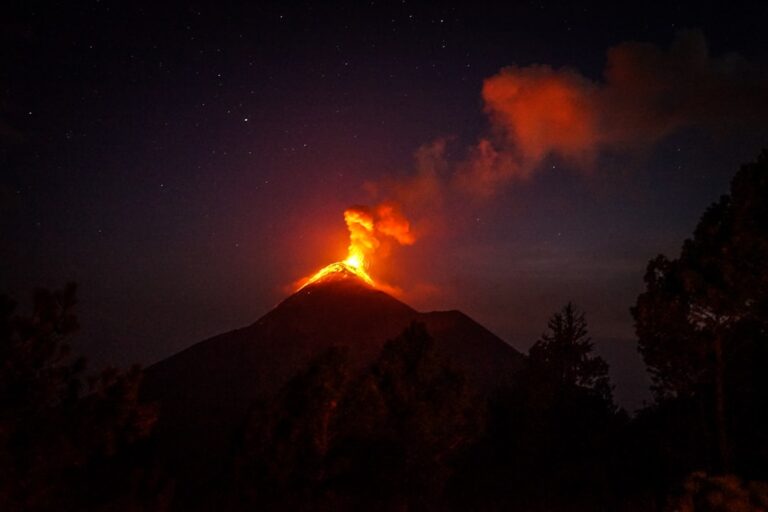The Star Shower phenomenon is a celestial spectacle that has captivated people for centuries. It is a breathtaking display of shooting stars, also known as meteor showers, that light up the night sky. These meteor showers occur when the Earth passes through a trail of debris left behind by a comet or asteroid. As the debris enters the Earth’s atmosphere, it burns up and creates streaks of light that we see as shooting stars.
Key Takeaways
- Star Shower is a meteor shower that occurs when Earth passes through the debris left by a comet or asteroid.
- The best places to view the Star Shower are areas with low light pollution, such as rural areas or national parks.
- The science behind the Star Shower involves the burning up of meteoroids in Earth’s atmosphere, creating streaks of light in the sky.
- Star Shower has cultural significance in many societies, with some viewing it as a sign of good luck or a time for spiritual reflection.
- To photograph the Star Shower, use a tripod and a camera with a wide aperture and high ISO settings.
What is Star Shower and How Does it Work?
Star Shower, also known as a meteor shower, is a natural phenomenon that occurs when the Earth passes through a trail of debris left behind by a comet or asteroid. These debris particles, also known as meteoroids, are usually no larger than a grain of sand. As the Earth moves through the debris field, these meteoroids enter the Earth’s atmosphere at high speeds, causing them to burn up and create streaks of light in the sky.
The process of a meteoroid burning up in the Earth’s atmosphere is called ablation. When a meteoroid enters the atmosphere, it experiences intense heat and pressure, causing it to vaporize and create a glowing trail of gas and dust. This glowing trail is what we see as shooting stars during a meteor shower.
The Best Places to View the Star Shower Phenomenon
The best places to view a Star Shower are areas with minimal light pollution and clear skies. Light pollution from cities and towns can greatly diminish the visibility of shooting stars, so it is best to find a location away from urban areas. National parks, rural areas, and remote locations are ideal for viewing meteor showers.
In addition to finding a location with minimal light pollution, it is also important to have clear skies for optimal viewing. Cloudy or overcast skies can obstruct the view of shooting stars, so it is best to check weather forecasts before planning a meteor shower viewing.
The Science Behind the Celestial Spectacle
Meteor showers occur when the Earth passes through a trail of debris left behind by a comet or asteroid. Comets are icy bodies that orbit the Sun, and as they get closer to the Sun, the heat causes the ice to vaporize and release dust and debris. This debris is left behind in the comet’s orbit and forms a trail.
When the Earth passes through this trail of debris, the particles enter the Earth’s atmosphere and burn up, creating streaks of light in the sky. The Earth’s atmosphere acts as a protective shield, causing the meteoroids to heat up and vaporize before they can reach the surface.
The History of Star Shower and its Cultural Significance
Meteor showers have been observed and recorded throughout history, with some accounts dating back thousands of years. In ancient times, meteor showers were often seen as omens or signs from the gods. They were believed to be messages from the heavens, foretelling important events or changes in the world.
In many cultures, meteor showers were associated with celestial beings or supernatural phenomena. They were often seen as a bridge between the earthly realm and the divine, and were believed to have mystical powers. People would often make wishes or prayers as they watched shooting stars, believing that their desires would be granted.
Tips for Photographing the Star Shower

Photographing a meteor shower can be a challenging but rewarding experience. To capture the best shots, it is important to have the right equipment and use proper techniques.
Firstly, you will need a camera with manual settings that allow you to adjust the exposure time and aperture. A wide-angle lens is also recommended to capture as much of the night sky as possible.
To capture shooting stars, it is best to use a tripod to keep your camera steady during long exposure shots. Set your camera to manual mode and adjust the exposure time to several seconds or more. Experiment with different exposure times to find the best settings for capturing shooting stars.
The Different Types of Meteor Showers and their Characteristics
There are several different types of meteor showers, each with its own characteristics and origins. The most well-known meteor shower is the Perseids, which occurs in August and is associated with the comet Swift-Tuttle. The Perseids are known for their bright and fast-moving meteors.
Another popular meteor shower is the Geminids, which occurs in December and is associated with the asteroid 3200 Phaethon. The Geminids are known for their slow-moving and colorful meteors.
Other notable meteor showers include the Leonids, which occur in November and are associated with the comet Tempel-Tuttle, and the Quadrantids, which occur in January and are associated with an unknown parent body.
The Best Times of Year to See the Star Shower
The best times to view meteor showers are when the Earth passes through a dense part of a comet or asteroid’s debris trail. This usually occurs at the same time each year, as the Earth orbits the Sun and intersects with these debris trails.
The Perseids, which occur in August, are one of the most reliable and well-known meteor showers. They are visible from both hemispheres and can produce up to 100 meteors per hour at their peak.
The Geminids, which occur in December, are another popular meteor shower. They are known for their high activity rate and can produce up to 120 meteors per hour at their peak.
The Role of Meteor Showers in Astronomy and Space Exploration
Meteor showers play an important role in astronomy and space exploration. By studying meteor showers, scientists can learn more about the composition and origins of comets and asteroids. This information can provide valuable insights into the formation and evolution of our solar system.
Meteor showers also provide an opportunity to study the Earth’s atmosphere. As meteoroids burn up in the atmosphere, they release gases and create ionized trails. By studying these trails, scientists can learn more about the composition and dynamics of the Earth’s atmosphere.
The Mythology and Folklore Surrounding Meteor Showers
Meteor showers have long been associated with mythology and folklore. In many cultures, shooting stars were seen as messages from the gods or celestial beings. They were often seen as a sign of good luck or a blessing from above.
In Greek mythology, shooting stars were believed to be the souls of the dead ascending to heaven. In Norse mythology, shooting stars were seen as sparks from the anvils of the dwarves, who were believed to be forging weapons for the gods.
How to Prepare for and Enjoy the Star Shower Experience
To prepare for a meteor shower viewing, it is important to check weather forecasts and find a location with minimal light pollution. Dress warmly and bring blankets or chairs for comfort during the viewing.
To fully enjoy the experience, it is best to arrive at your viewing location before sunset to allow your eyes to adjust to the darkness. Bring snacks and drinks to keep yourself hydrated and energized throughout the night.
The Star Shower phenomenon is a captivating celestial spectacle that has fascinated people for centuries. It is a reminder of the beauty and wonder of our universe, and a chance to connect with something greater than ourselves. Whether you are a seasoned astronomer or simply someone who appreciates the beauty of the night sky, witnessing a meteor shower is an experience that should not be missed. So find a dark spot, look up at the sky, and prepare to be amazed by the magic of shooting stars.
If you’re looking for more information on star showers and how they can transform your outdoor space, be sure to check out this fascinating article on Adeline Luce’s website. The article delves into the mesmerizing beauty of star showers and provides helpful tips on how to create your own celestial display. Discover the magic of star showers and explore the possibilities of turning your backyard into a celestial wonderland by clicking here.
FAQs
What is Star Shower?
Star Shower is a device that projects thousands of laser lights onto your home or garden, creating a festive and colorful display.
How does Star Shower work?
Star Shower uses laser technology to project thousands of tiny dots of light onto your home or garden. The device is easy to set up and can be used both indoors and outdoors.
What are the benefits of using Star Shower?
Star Shower is a great way to add some festive cheer to your home or garden without the hassle of traditional holiday lights. It is easy to set up, energy-efficient, and can be used year-round for parties and other events.
Is Star Shower safe to use?
Yes, Star Shower is safe to use. The lasers used in the device are low-power and comply with FDA regulations. However, it is important to avoid shining the lasers directly into your eyes.
Can Star Shower be used in all weather conditions?
Star Shower is designed to be weather-resistant and can be used in most weather conditions. However, it is recommended to bring the device indoors during heavy rain or snow.
How long does Star Shower last?
Star Shower is designed to last for thousands of hours, making it a durable and long-lasting investment for your home or garden.
Where can I buy Star Shower?
Star Shower can be purchased online or at most major retailers, including Walmart, Target, and Amazon.















+ There are no comments
Add yours